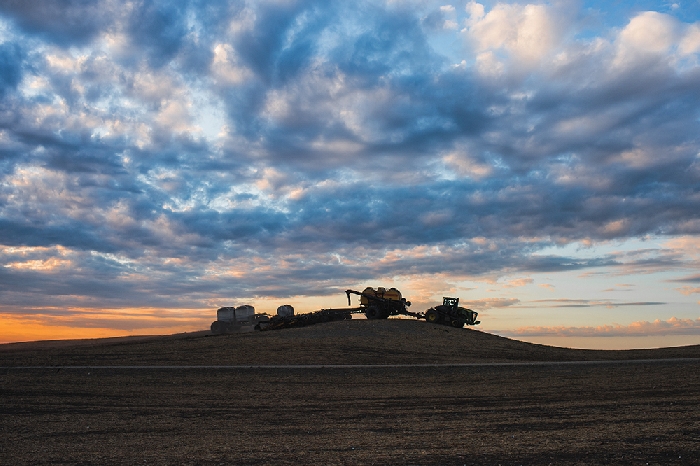Seeding more than 60 per cent complete in SE Sask
May 19, 2017, 4:29 am


Good seeding progress was made for much of the province over the week up to May 15, according to Saskatchewan's weekly crop report released today.
Seeding is most advanced in the southeast, where producers have 60 per cent of the crop in the ground. Forty-six per cent is seeded in the southwest; 19 per cent in the east-central region; 16 per cent in the west-central region; eight per cent in the northwest and four per cent in the northeast.
Across the province, Fifty-two per cent of the chickpeas, 50 per cent of the field peas, 49 per cent of the lentils, 42 per cent of the mustard, 37 per cent of the durum and 21 per cent of the spring wheat and canola have now been seeded.
Seeding is rapidly advancing in southeast Saskatchewan thanks to warm and dry weather. Producers have doubled seeding progress from last week with 60 per cent of the crop now seeded.
The five-year (2012-2016) seeding average for this time of year is 33 per cent. Field conditions have been optimal for most producers, although strong winds continue to dry topsoil moisture up and delay herbicide applications.
Most of the southeast received small amounts of rainfall last week, although some areas reported larger amounts. The Frobisher area reported 22 mm, the Maryfield and Glenavon areas 10 mm, the Fillmore and Radville areas 1 mm, the Moose Jaw area 11 mm and the Marquis area 3 mm. The Moose Jaw area has reported receiving the most precipitation (65 mm) in the region since April 1.
Topsoil moisture conditions continue to deteriorate in the region due to strong winds and warm temperatures. Cropland topsoil moisture is rated as eight per cent surplus, 73 per cent adequate, 18 per cent short and one per cent very short.
Hay land and pasture topsoil moisture is rated as five per cent surplus, 69 per cent adequate, 24 per cent short and two per cent very short. Rain would be welcomed in some areas of the region, while other areas need warm weather to help dry fields up. Crop District 3ASE is reporting that 67 per cent of the cropland is short topsoil moisture at this time while CD 1B is reporting that 17 per cent of the cropland has surplus topsoil moisture at this time.
Crops are quickly emerging, although some fields are patchy due to moisture concerns. In- crop herbicide applications have begun for winter cereal crops. There are many reports that large amounts of straw and trash in fields is proving a challenge for seeding equipment. Flax stubble continues to be burned in some areas. Light frost was also reported in some areas, although damage is exp
ected to be minimal.
Farmers are busy seeding, working fields, controlling weeds and moving cattle.



































